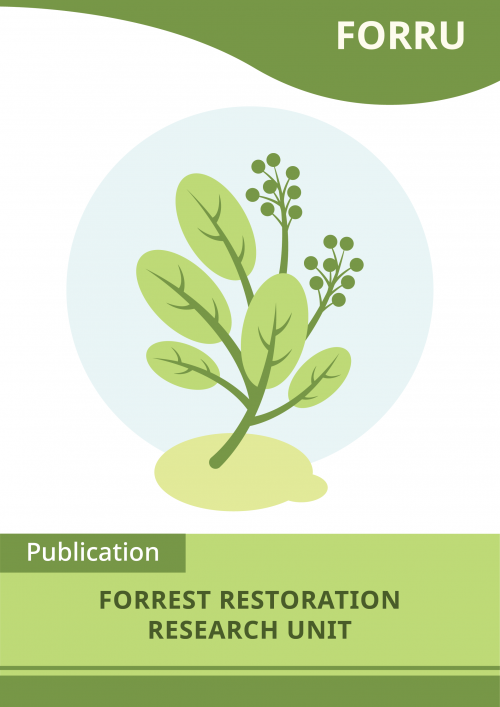Principles of restoring tropical forest ecosystems and opportunities for conserving endemic, endangered and threatened tree species
Date
2017
Authors
Elliott, S., K. Hardwick, D. Blakesley & S. Chairuangsri
Publisher
Pp 1-5 in Ho, W.M., V. Jeyanny, H. S. Sik & C. T. Lee (Eds), Reclamation, Rehabilitation and Restoration of Disturbed Sites: planting of national and IUCN red list species. FRIM, Kuala Lumpur, Malaysia, 115 pp
Serial Number
189
Suggested Citation
Elliott, S., K. Hardwick, D. Blakesley & S. Chairuangsri, 2017. Principles of restoring tropical forest ecosystems and opportunities for conserving endemic, endangered and threatened tree species. Pp 1-5 in Ho, W.M., V. Jeyanny, H. S. Sik & C. T. Lee (Eds), Reclamation, Rehabilitation and Restoration of Disturbed Sites: planting of national and IUCN red list species. FRIM, Kuala Lumpur, Malaysia, 115 pp (seminar proceedings).





